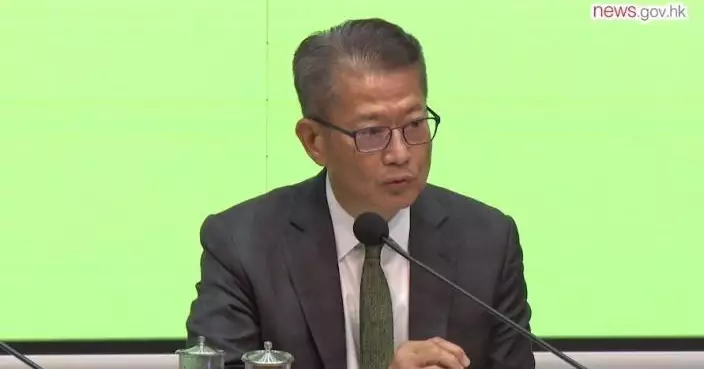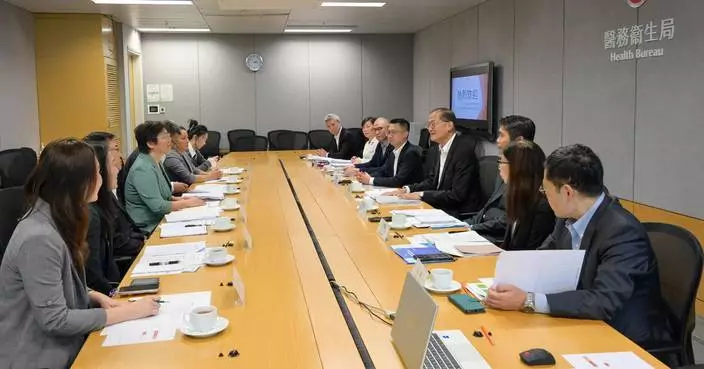Monetary Authority announces countercyclical capital buffer ratio for Hong Kong
The following is issued on behalf of the Hong Kong Monetary Authority:
The Monetary Authority announced today (October 18) that the countercyclical capital buffer (CCyB) ratio for Hong Kong is reduced from 1 per cent to 0.5 per cent with immediate effect.
The Monetary Authority, Mr Eddie Yue,said, "While the local economy has continued to recover, the risk of economic overheating is well contained as suggested by the quantitative indicators. Facing changes in the market landscape, certain sectors in the domestic economy, in particular the SMEs, are nevertheless still seeing challenges in their business operations amid uncertainties in the external and local economic environment. It is therefore appropriate to reduce the CCyB moderately to allow banks to be more supportive to Hong Kong’s economy. Together with the other measures already introduced by the HKMA to support SMEs, we expect banks to make use of the additional leeway provided by the lower CCyB to further facilitate the financing needs of local SMEs. A gradual increase in the CCyB for Hong Kong will only be considered in the future when data suggest that there is more broad-based growth in the domestic economy and when the credit and property market conditions suggest a higher CCyB is warranted."
Further details of the decision may be found in the Announcement of the CCyB to Authorized Institutions on the HKMA website.
Background
In setting the CCyB ratio the Monetary Authority considered a series of quantitative indicators and qualitative information including an "indicative buffer guide" (which is a metric providing a guide for CCyB ratio based on the gap between the ratio of credit to GDP and its long term trend, and between the ratio of residential property prices to rentals and its long term trend). The latest indicative buffer guide calculated based on 2024Q2 data and the Positive Neutral CCyB (Note)according to the revised formula, signals a CCyB of 1 per cent. The projection based on all available data suggests that the indicative buffer guide would likely signal a CCyB of 1 per cent when all relevant 2024Q3 data become available.
The indicative buffer guide, as its name suggests, provides only a "guide" for CCyB decisions, and the determination of the jurisdictional CCyB ratio for Hong Kong is not a mechanical exercise. In addition to the indicative buffer guide, the Monetary Authority also reviewed other relevant information. While the local economy has continued to recover, the risk of economic overheating is well contained as suggested by quantitative indicators. Facing changes in the market landscape, certain sectors in the domestic economy, in particular the SMEs, are nevertheless still seeing challenges in their business operations amid uncertainties in the external and local economic environment. Together with the other measures already introduced by the HKMA to support SMEs, a lower CCyB will provide banks with additional leeway to further facilitate the financing needs of local SMEs.
The CCyB is an integral part of the Basel III regulatory capital framework and is being implemented in parallel by Basel Committee member jurisdictions worldwide. The CCyB has been designed by the Basel Committee to increase the resilience of the banking sector against system-wide risks. The banking sector can then act as a "shock absorber" in times of stress, rather than as an amplifier of risk to the broader economy.
The power to implement the CCyB in Hong Kong is provided by the Banking (Capital) Rules, which enable the Monetary Authority to announce a CCyB ratio for Hong Kong. The specific CCyB requirement applicable to a given Authorized Institution (AI) is expressed as a percentage of its CET1 capital to its total risk-weighted assets (RWA). Each AI’s CCyB requirement may vary depending on the geographic mix of its private sector credit exposures and the CCyB applicable in each jurisdiction where it has such exposures.
Note: Under the Positive Neutral CCyB approach, authorities aim for a positive CCyB when risks are judged to be neither subdued nor elevated. Please refer to www.bis.org/publ/bcbs_nl30.htm for more information.








